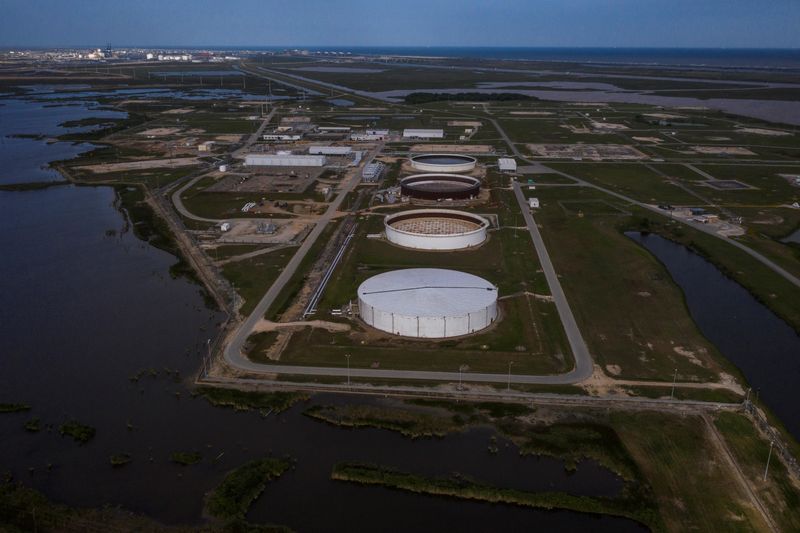
By Nicole Jao and Colleen Howe
(Reuters) -Oil prices ticked up in Asian trading on Friday, with investors exercising caution ahead of key U.S. employment data as they weighed a big withdrawal from U.S. crude inventories and a delay to production hikes by OPEC+ producers.
Brent crude futures rose 13 cents to $72.82 by 0507 GMT, and U.S. West Texas Intermediate crude futures were up 12 cents, or 0.17%, to $69.27.
“It seems that broader caution prevails, as market participants are still trying to wrap their heads around the mixed U.S. economic data coming through this week, while the lead-up to the crucial jobs report may limit some risk-taking,” said Yeap Jun Rong, a market strategist at IG.
For the week, Brent was on track to drop nearly 8%, while WTI was headed for a decline of almost 6%.
There have been mixed signals on the U.S. economy this week, ahead of nonfarm payrolls data on Friday that is expected to be key to the size of a U.S. interest rate cut at the Federal Reserve’s Sept. 17-18 meeting.
U.S. services sector activity was steady in August, but private jobs growth slowed, remaining consistent with an easing labor market.
“Memories of the early-August sell-off across global markets may remain fresh on investors’ mind, which kept sentiment on tenterhooks on the risks that U.S. labour conditions may turn in another surprise downside,” Yeap said.
In early August, oil prices fell by more than a dollar and Brent settled at a seven-month low after fears of a U.S. recession sparked a global market sell-off, though prices later recovered on worries of escalating conflict in the Middle East.
On Thursday, Brent again settled at a more than one-year low as worries about U.S. and Chinese demand offset support from a big withdrawal from U.S. oil inventories and the decision by OPEC+ to delay planned oil output increases. [EIA/S]
Crude stockpiles fell by 6.9 million barrels to 418.3 million barrels compared with analysts’ expectations in a Reuters poll for a 993,000-barrel draw, because of lower imports.
OPEC+ agreed to delay a planned oil production increase for October and November, the producers group said on Thursday, adding that it could further pause or reverse the hikes if needed.
“Markets appear to be underwhelmed with the move,” ING analysts wrote in a note, adding that demand worries remain a key driver of weak sentiment.

On the demand front, the slumping U.S. dollar offered some support, as it sagged near a one-week low on the mixed signals from job market indicators.
A weaker dollar makes oil cheaper for buyers using other currencies.
This post is originally published on INVESTING.





